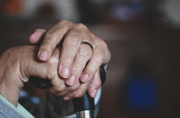
The holiday season is a time when our hearts—and wallets—open a little wider. For many of us in The GrayVine community, giving back is as much a part of the festivities as pumpkin pie and twinkling lights.
Whether it’s supporting veterans, feeding hungry families, or helping communities recover from disasters, retirees are often the backbone of charitable giving in America.
But as the spirit of generosity fills the air, so too does the scent of opportunity for scammers.
Every year, millions of dollars meant for good causes are siphoned away by fake charities that spring up like weeds just before the holidays.
These fraudsters are increasingly sophisticated and persistent. Their phone calls, emails, and letters look legitimate, but the money you send never reaches those in need.
Instead, it lines the pockets of criminals who are ready to strike again.
So, how can you protect your hard-earned money, your identity, and your peace of mind while still supporting the causes you care about?
Let’s unwrap the truth about holiday charity scams and arm ourselves with the knowledge to give safely.
Why retirees are prime targets for holiday scams
It’s no secret: retirees are among the most generous donors in the country. Scammers know this, and they tailor their tactics accordingly.
Here’s why retirees are often in the crosshairs:
Emotional appeals – Fraudsters mention children in need, veterans, or disaster victims to tug at your heartstrings and create urgency.
Polite persistence – Retirees are more likely to answer the phone and engage, giving scammers more time to manipulate the conversation.
Data exposure – Thanks to data brokers, scammers can buy lists that include your age, donation habits, and interests—so they don’t have to guess.
Combine a giving spirit with publicly available data, and retirees become the “perfect donors” in the eyes of scammers.
Also read: Holiday Warning: Avoid This Gift Card Scam Now!
Spotting the warning signs: How to tell a real charity from a fake
Scammers are getting more sophisticated, but there are still telltale signs that can help you spot a fake charity:
Pressure to act fast – If someone insists you donate “right now,” or uses guilt to get you to pay before hanging up, take caution.
Vague details – Real charities explain clearly how your donation will be used. Scammers often give generic promises like “helping the needy.”
Untraceable payment methods – Requests for gift cards, wire transfers, Zelle, or Venmo are red flags. These are hard to trace or reverse.
Lookalike names – Scammers often mimic real charities with slight name changes like “Veterans Hope Relief” or “Children’s Aid International.”
Caller ID spoofing – Scammers can make their number appear local or display the name of a known organization.
How to safely check a charity before donating
Don’t let fear stop you from giving. Just be smart about how and where you give:
Research the charity – Use Charity Navigator, the BBB Wise Giving Alliance, or the IRS Tax-Exempt Search.
Ask for written information – Real charities will send details about their mission, finances, and how your donation helps.
Confirm tax-exempt status – Only donate to verified 501(c)(3) nonprofits unless you are giving informally to a known local cause.
Review how donations are used – Even legitimate charities may spend more on salaries than programs. Do your homework.
Also read: Watch out! This latest TSA scam targets holiday travelers
Protecting your payment details
Even when donating to a real charity, how you give still matters:
Use a credit card – Offers better fraud protection than debit cards or checks.
Never give payment info over the phone – Unless you initiated the call with a known organization.
Donate through official websites – Never click on donation links in unsolicited emails.
Keep records – Save receipts and confirmations for taxes and to track suspicious activity later.
Also read: Scam Alert: The holiday credit card scams you need to watch for immediately!
The hidden threat: data brokers and your personal information
Here’s something most people don’t know: scammers often start with data brokers.
These companies collect and sell your age, phone number, religion, donation history—even your political views.
That means scammers can purchase lists of “retirees who donate to veterans' causes” and start calling immediately. The more personal data they have, the more convincing they sound.
Removing your data from these brokers can help reduce your exposure to scams.
Also read: Beware of the Secret Santa scam that targets gift lovers–here’s how to protect yourself!
How to remove your data from broker sites
Doing it yourself means contacting dozens (sometimes hundreds) of sites—each with its own process. It’s time-consuming and frustrating.
That’s where data removal services come in. They contact these companies for you, request removals, and continue monitoring in case your info gets re-listed.
No service can guarantee complete deletion, but using a reputable data removal provider can significantly reduce scam exposure and robocalls.
Giving back without giving in: Your holiday giving checklist
Keep this list in mind before making a holiday donation:
Research every charity before giving.
Avoid high-pressure tactics and emotional guilt trips.
Use safe payment methods—preferably credit cards.
Save records of all donations.
Consider using a data removal service to protect your privacy.
Let’s keep the holidays joyful—and scam-free
The holidays should be about joy, generosity, and making a difference—not funding scams.
By staying alert, verifying where your money goes, and protecting your personal data, you can ensure your donations help the people who need it most.
Read next:
- Are you a swindler's target? Learn how to outsmart holiday scams online!
- 10 warning signs that social media ad might be a scam—have you seen these tricks?
- Protect your wallet this holiday—don’t miss this four-letter word in URLs before buying!
Have you ever been contacted by a fake charity during the holidays? What tipped you off?
Do you have tips for safe giving or stories to share? Drop your advice in the comments below—your story could help someone else avoid a costly mistake.






